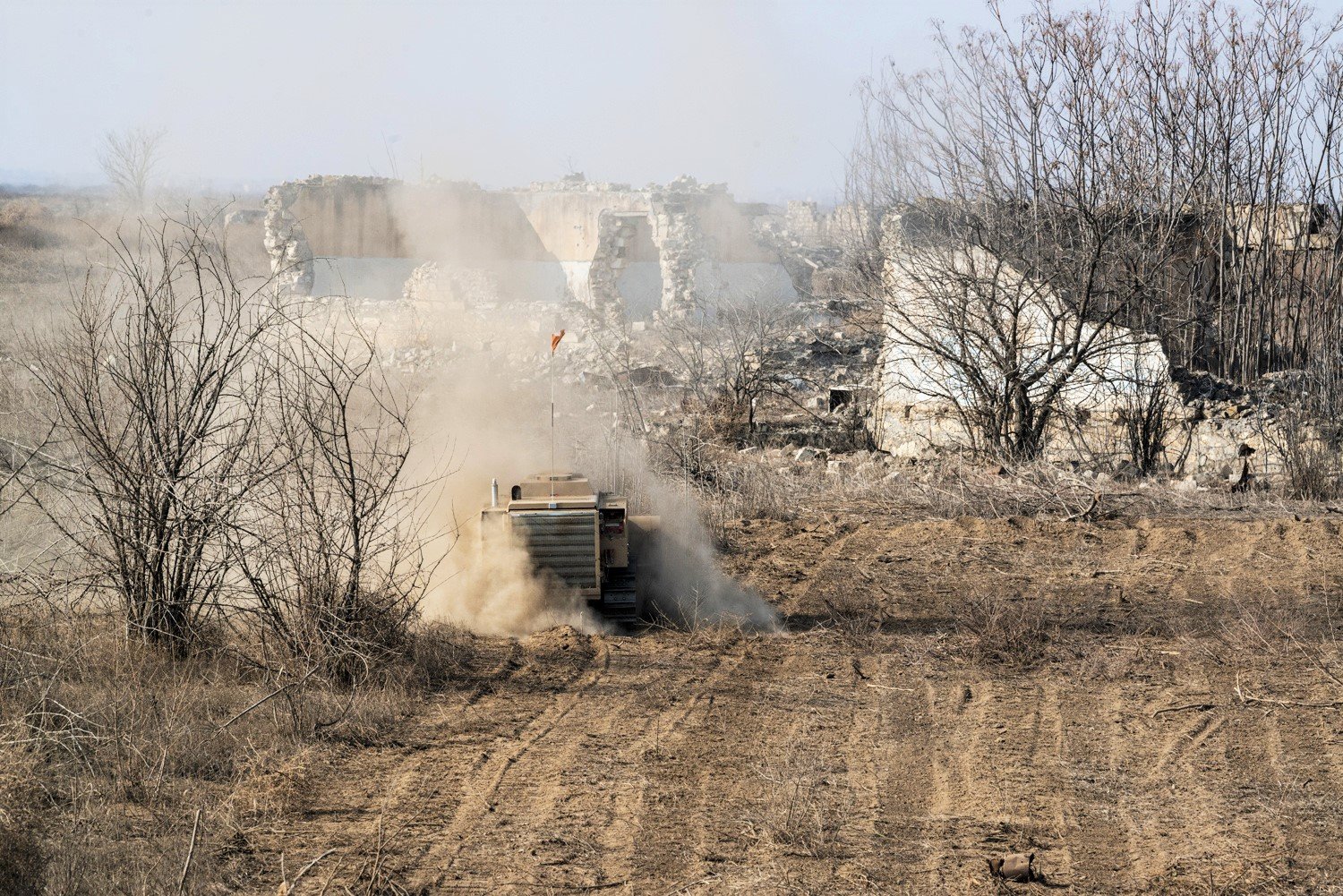US Ambassador to Azerbaijan Earl Litzenberger has highlighted the existing landmine threat in the liberated territories of Azerbaijan.
According to him, the problem of mine contamination in Azerbaijan is critical in the light of the return of internally displaced persons, a process that is hindered by the ongoing danger of landmines.
Litzenberger offered to increase the involvement of the American companies in the ongoing demining activities in Azerbaijan.
“The United States has great experience in this [mine clearance], we can present the best equipment [...] We want to see more American companies in Karabakh,” Litzenberger said in a press briefing in Baku on Thursday.
The Karabakh (Garabagh) and East Zangazur regions of Azerbaijan had been heavily mined during the nearly 30-year illegal Armenian occupation since the early 1990s. Armenia launched a full-blown military assault against Azerbaijan following the Soviet Union’s dissolution in 1991. The bloody war lasted until a ceasefire was reached in 1994 and saw Armenia occupying 20 percent of Azerbaijan’s internationally-recognized territories. Over 30,000 Azerbaijanis were killed, and 1 million were expelled from those lands in a brutal ethnic cleansing campaign carried out by Armenia.
On September 27, 2020, the decades-old conflict between the two countries reignited after Armenia’s forces deployed in occupied Azerbaijani lands shelled military positions and civilian settlements of Azerbaijan. During the counter-attack operations that lasted 44 days, Azerbaijani forces liberated over 300 settlements, including the cities of Jabrayil, Fuzuli, Zangilan, Gubadli, and Shusha, from the Armenian occupation. The war ended in a tripartite statement signed on November 10, 2020, by Armenia, Azerbaijan, and Russia, under which Armenia also returned the occupied Aghdam, Kalbajar, and Lachin districts to Azerbaijan.
Since the end of hostilities, the Azerbaijani government has been carrying out demining operations in the liberated territories to expedite the return of internally displaced people to their homes.
The mine disposal teams of the Azerbaijan National Agency for Mine Action (ANAMA), together with specialists from the Ministry of Emergency Situations, the Border Services Command, and the Turkish Armed Forces, have been conducting demining operations. ANAMA deploys cutting-edge Turkish, British, Slovak, and Croatian production machinery. France is also expected to supply demining equipment to the agency. A minesweeper of local production, known as Revival-P1, is also supposed to join the mine action soon.
Several foreign countries and organizations, including the United Kingdom, European Union, and UNESCO, have financially supported the mine clearance operations. The US-based Marshall Legacy Institute provided 20 trained landmine detection dogs to ANAMA and is expected to dispatch five more this month.
More than 200 Azerbaijanis have been killed or injured by Armenian landmines since the 2020 statement. In June 2021, two journalists and a government official lost their lives in a mine blast in the Kalbajar district.
Despite extensive efforts, demining operations have faced many challenges due to Armenia’s refusal to hand over maps of the areas where the landmines are located.
Azerbaijan obtained from Armenia the minefield maps of the once occupied Aghdam, Fuzuli, and Zangilan districts, which reportedly identify the coordinates of a total of 189,000 anti-tank and anti-personnel mines. Armenia has recently provided the Azerbaijani side with mine maps of other liberated territories of Azerbaijan. In exchange for maps, Azerbaijan released dozens of Armenian saboteurs detained in Azerbaijani territory after the ceasefire. However, Azerbaijan’s President Ilham Aliyev said the accuracy of these maps did not exceed 25 percent. Officials in Baku are convinced that the maps hidden by Armenia could help neutralize at least one million landmines planted in the once occupied Azerbaijani lands.
From June 1-4, 2022, ANAMA specialists found and defused 54 anti-personnel, 25 anti-tank mines, and 206 unexploded ordnances.







 Armenian sappers commenced on Monday mine-clearance operations in the territories adjacent to the Saint Mary Church in village of Voskepar (Armenia...
Armenian sappers commenced on Monday mine-clearance operations in the territories adjacent to the Saint Mary Church in village of Voskepar (Armenia...
 Russian Foreign Minister Sergei Lavrov has reasserted that Moscow has no intentions to stop the fighting in Ukraine, even if peace talks commence.
Russian Foreign Minister Sergei Lavrov has reasserted that Moscow has no intentions to stop the fighting in Ukraine, even if peace talks commence.
 Iran has refuted reports of alleged damage to Shimon Peres Negev Nuclear Research Centre located southeast of Dimona, Israel, during the recent air...
Iran has refuted reports of alleged damage to Shimon Peres Negev Nuclear Research Centre located southeast of Dimona, Israel, during the recent air...
 The Mine Action Agency of Azerbaijan (ANAMA) reported on Thursday the discovery of a significant amount of explosives in the Khojavand district of ...
The Mine Action Agency of Azerbaijan (ANAMA) reported on Thursday the discovery of a significant amount of explosives in the Khojavand district of ...



